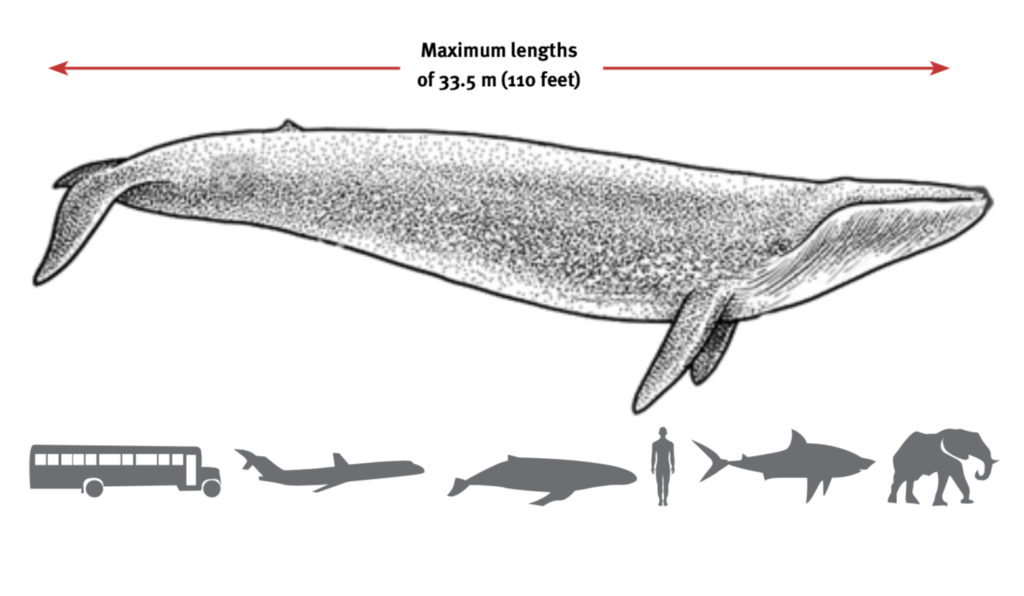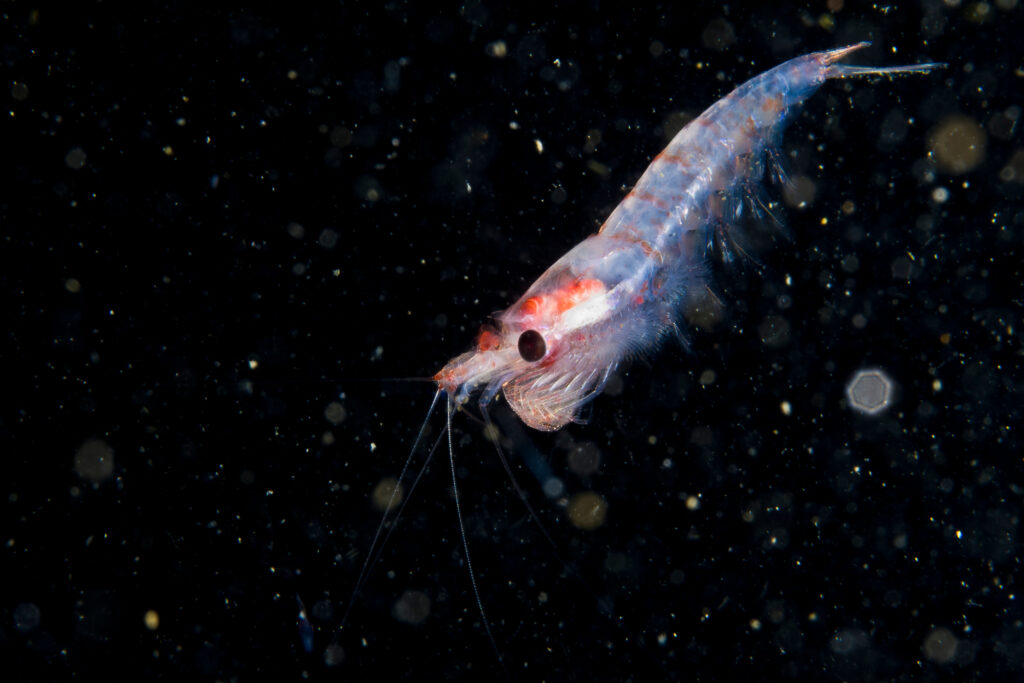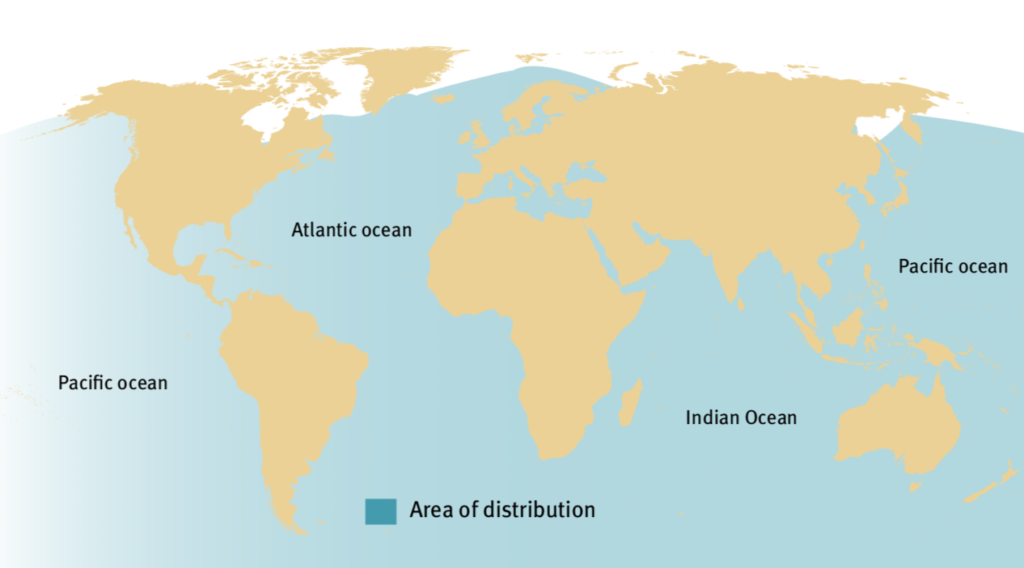
Blue whales are incredibly important to our food chain. These large creatures often goes unnoticed and unthanked when it comes to their contributions to the environment. #DidYouKnow the blue whale’s iron-rich poo is a vital source of nutrients for phytoplankton? These plankton in turn removes carbon dioxide from the atmosphere. Some might even say that blue whales are carbon neutral!
However, currently more than 99% of blue whales are being killed as a result of whaling. Here are 5 interesting facts about blue whales that you may or may not know about!
- Blue whales are THE BIGGEST animal ever to roam planet earth.
Now it might not sound like such a huge feat, but take a look at the size of a blue whale compared to humans, busses and elephants. With a maximum length of 33.5 metres or 110 feet, they can weigh up to 180,000kg! That’s about the same as 40 elephants, 30 Tyrannosaurus Rex or 2,670 average sized men.

2. These gentle giants only feed on shrimp-like animals called krill.
Ironically, the largest animal on earth consumes one of the smallest! Imagine the amount of krill it takes to provide enough energy to keep these humongous creatures alive. A single adult blue whale can consume 36,000kg of krill in a day!
 3. There are 4 different subspecies of whale
3. There are 4 different subspecies of whale
- B. m. musculus, which inhabit the North Atlantic and North Pacific
- B. m. intermedia, which inhabit the Antarctic Ocean
- B. m. brevicauda also known as the pygmy blue whale, which inhabit the Indian Ocean and South Pacific Ocean
- B. m. indica, which inhabit the Northern Indian Ocean
Of the four subspecies, B. m. musculu, B. m. brevicauda and B. m.indica can be found in Asia as they inhabit the Pacific and Indian oceans.

4. Blue whales were difficult to hunt down due to their size and unusual speed.
With introduction of whale hunting, colloquially known as whaling, and the rising demand for whale parts, blue whales were poached to near extinction. So how does one do it? Whaling was further expedited with new a new invention: the dreaded exploding harpoon gun. Also known as the bomb lance or grenade harpoon, it was invented by Norwegian whaling magnate Svend Foyn.

These mechanised and powerful grenade harpoons were launched at whales at high speeds, piercing their hides with ease and dealing massive amounts of damage that would slow down or even completely incapacitate the whale.
5. Blue whales are greatly affected by noise pollution.
When considering noise pollution, one might not instantly think of the ocean, overlooking the detrimental impact of a noisy seas. Sounds produced by military sonar, oil and gas drillings as well as exploration and shipping, interferes and disrupts a whale’s communication. Whales solely rely on sound to navigate through these vast water bodies. Communicating at 188 decibels, it is louder than jet engines at 140 decibels! With that being their only form of communication, they are heavily affected by noise pollution in the ocean. This might cause undue stress, and even potentially strand a whale calf. Once stranded, a blue whale calf ’s chances of survival diminishes.

Conservation efforts are being made internationally to preserve the blue whale population. Blue whales have been listed as endangered under the Endangered Species Act and the International Union for Conservation of Nature. They have also been granted complete protection under the International Convention for the Regulation of Whaling, which mandates that the Southern Hemisphere, North Atlantic, Antarctic, North Pacific and North Atlantic are protected areas. Once the populations and their threats are fully understood, suitable actions will be made to minimise the threats determined to be limiting recovery.
Read more about the other Endangered Species in Asia and others, check out Asian Geographic Magazine’s BlueGreen Edition Issue 3/2021 coming to the shelves soon or reserve your copy by emailing marketing@asiangeo.com.
Subscribe to Asian Geographic Magazine here or for more details, please visit https://www.shop.asiangeo.com/

